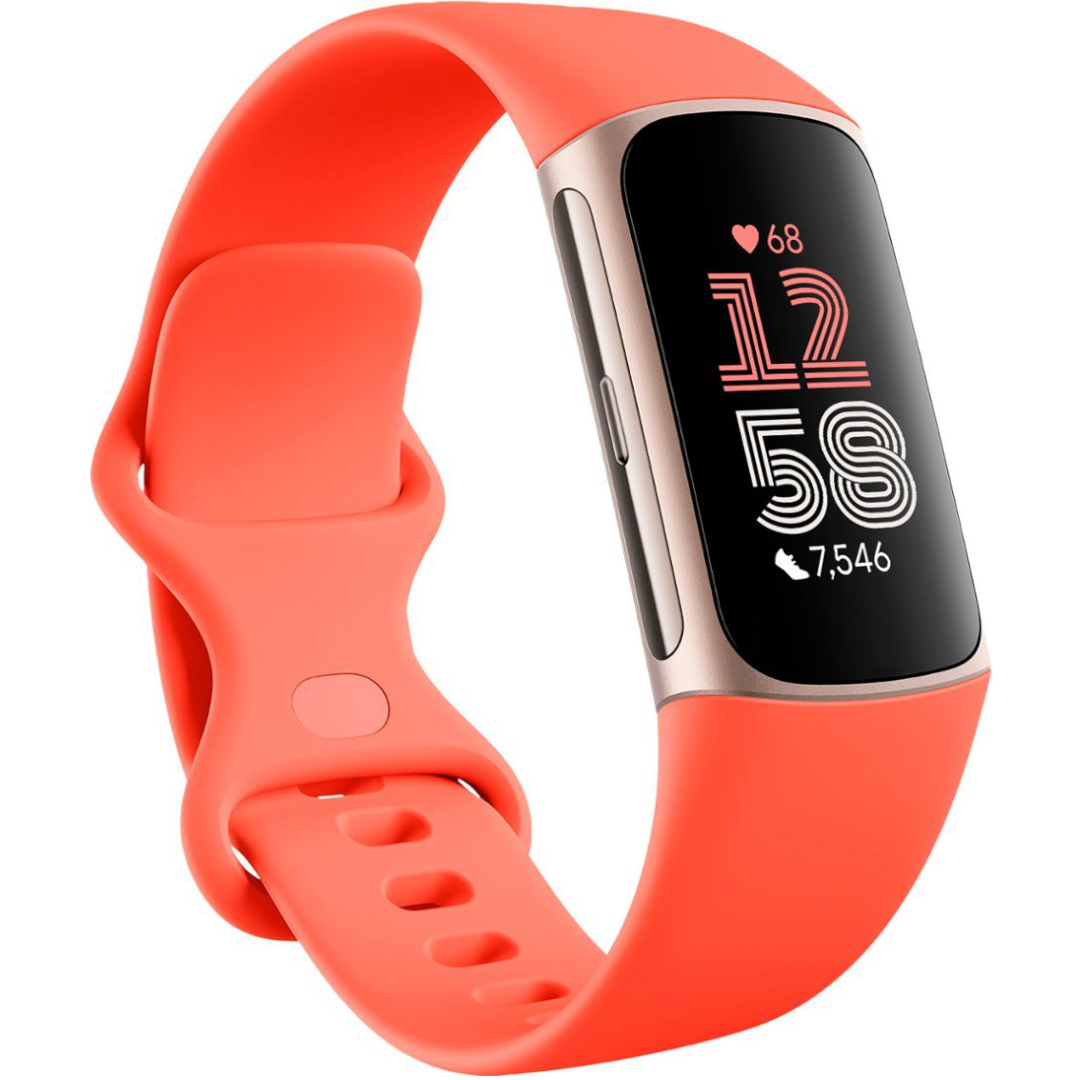
A Google IQ update
Fitbit and Google didn’t see any need to deviate from the Charge 5’s design, given its popularity. Instead, it packed in new smarts to make the Charge 6 a Google Pixel Band in everything but name. If having Google Maps or YouTube Music controls on your wrist is appealing, or if you weren’t happy with the heart rate accuracy on the Charge 5, you may want to upgrade.
For
- Useful haptic side button
- Better HR data during “vigorous” workouts
- Double the sports modes
- Google Maps/ Wallet & YouTube Music
- Still has 7-day battery life despite extra smarts
Against
- No updates to display, GPS accuracy
- Google account required
- No universal music controls
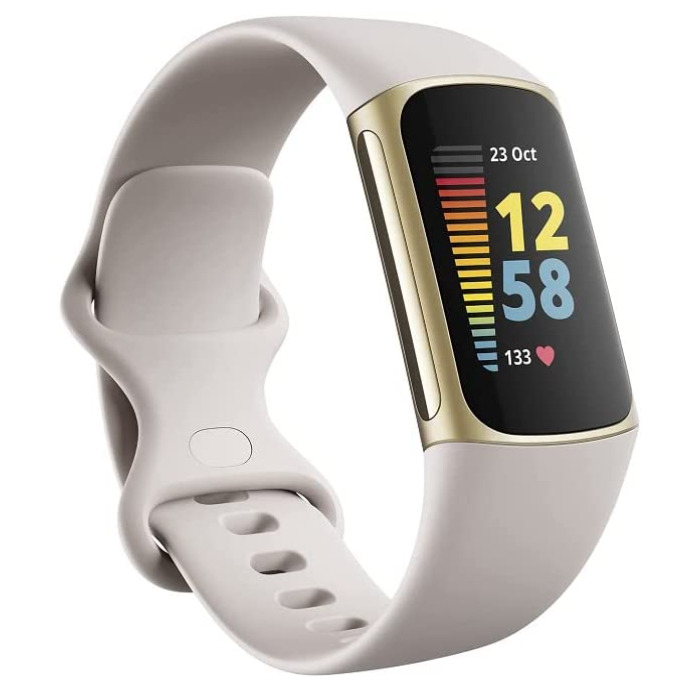
Our former #1 fitness tracker
The Charge 5 was ahead of its time. No other petite fitness tracker since has given you built-in GPS, an ECG for AFib detection, or skin temperature readings at night. Given that the Charge 5 has the same display and battery life as the Charge 6, you may not feel any need to upgrade just yet. Don’t expect it to get any of its successor’s new apps or algorithm updates, though.
For
- Same display quality and comfort
- Built-in GPS and tons of health sensors
- Compatible w/ Charge 6 bands
- Still works with Fitbit account (sort of)
Against
- Fully touchscreen reliant
- No Google apps
- No HR broadcasting
- Only six exercise profiles on device
The Fitbit Charge 6 and Charge 5 were released two years apart, and for all of the changes brought by Google’s Fitbit acquisition, not much changed between the two fitness trackers themselves. They’re nearly identical physically, have the same health sensors, and give you the same app experience.
That’s not to say Fitbit sat on its hands. It squeezed in new Google apps, revamped heart rate data, and a highly useful new haptic button. If you’re buying a new Fitbit tracker, the Charge 6 is the only logical choice, unless you prefer the petite Inspire 3.
If you already own the last-gen band, the Fitbit Charge 6 vs. Charge 5 differences may not be enough to justify the upgrade. Not to worry, though: We’ll help you decide!
Fitbit Charge 6 vs. Charge 5: What’s the same?
| Category | Fitbit Charge 6 | Fitbit Charge 5 |
|---|---|---|
| Display | 1.04-inch AMOLED (326 ppi); 450 nits brightness, Gorilla Glass | 1.04-inch AMOLED (326 ppi); 450 nits brightness, Gorilla Glass |
| Materials | Recycled aluminum case; silicone band with aluminum buckle | Recycled aluminum case; silicone band with aluminum buckle |
| Battery life | 7 days; about 5–6 hours GPS | 7 days; about 5–6 hours GPS |
| Charge time | 2 hours (proprietary cable) | 2 hours (proprietary cable) |
| Sensors and location | HRM, SpO2, ECG, EDA, skin temperature, ambient light, accelerometer, vibration, NFC | HRM, SpO2, ECG, EDA, skin temperature, ambient light, accelerometer, vibration, NFC |
| Connectivity | Bluetooth 5.0; HR broadcast on gym equipment | Bluetooth 5.0 |
| Tap-to-pay | Google Wallet | Fitbit Pay |
| Music playback | YouTube Music only (w/ sub) | None |
| Navigation | Google Maps (w/ connected phone) | None |
| Sports modes | 40 | 20 (only 6 at once) |
| Water resistance | Up to 50 meters | Up to 50 meters |
| Dimensions | 1.52 x 0.73 x 0.46 inches | 1.45 x 0.9 x 0.44 inches |
| Weight | 15g (pebble only); ~30g (pebble + band) | 15g (pebble only); ~30g (pebble + band) |
If you look at a Fitbit Charge 6 and Charge 5 side by side, you’d have trouble telling them apart. The dimensions are slightly different — the Charge 6 is 1.8mm taller, 4.3mm skinnier, and 0.5mm thicker than the Charge 5, based on the official measurements — but it’s essentially the same design and feel as before (with one exception).
That’s most evident in all of the above Fitbit Charge 6 specs that are copied and pasted over from its predecessor: You get a 1.04-inch AMOLED display with 450 nits of brightness, a 7-day battery life, a proprietary charging connector with a two-hour recharge time, 5ATM water resistance, and Gorilla Glass scratch resistance.
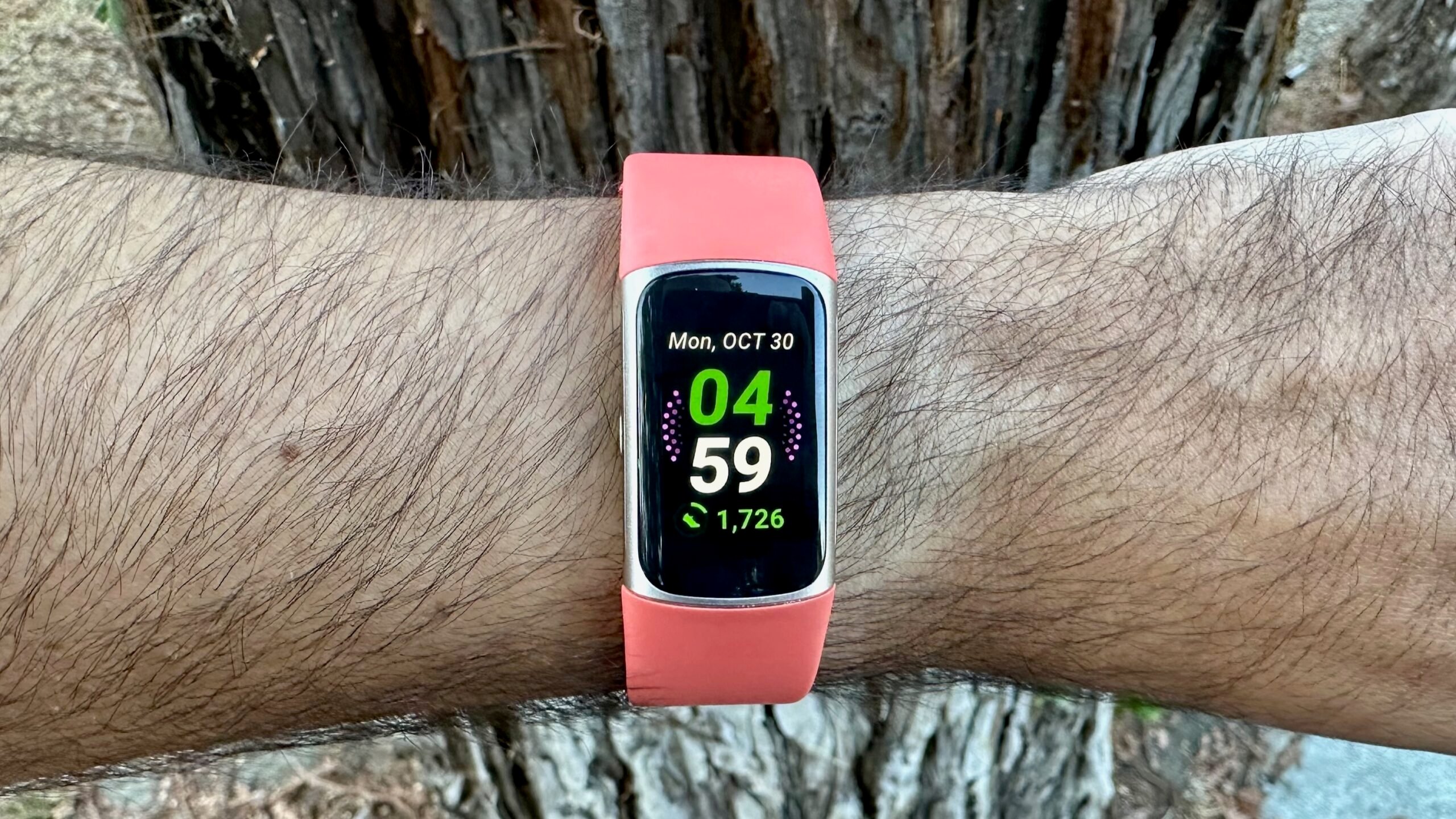
Our Charge 6 reviewer noted that he wished the tracker had gotten a bigger or brighter display than the Charge 5, as other brands now offer sizes well above 1 inch. But he also recognized that keeping this size helped Fitbit keep the Charge 6 as light and comfortable as the Charge 5.
Both trackers weigh 15g without the band attached, using the same aluminum, glass, and resin materials in each Charge pill. They employ the same proprietary band connector, too, meaning whichever of the best Fitbit Charge 6 bands you prefer, they’re also backwards compatible with the Charge 5.
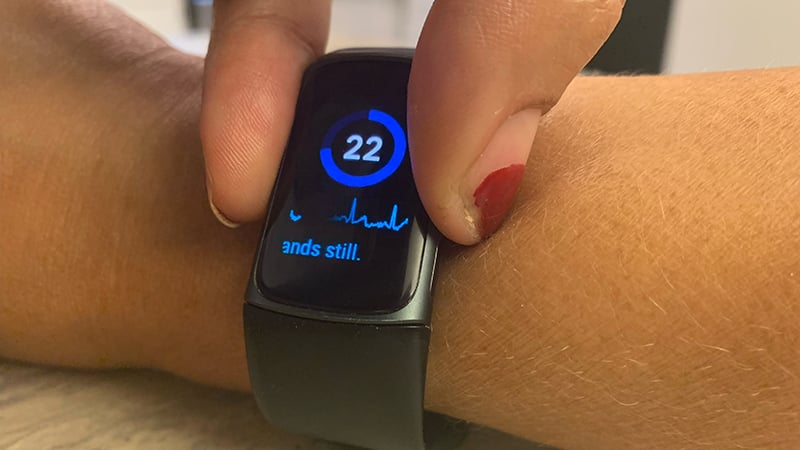
You’ll also find the same tech inside of the Fitbit Charge 6 and Charge 5.
Each has an antenna for GPS or GLONASS tracking without your phone nearby — though they default to your phone’s GPS when it’s nearby. The built-in GPS has its issues for both the Charge 6 and Charge 5: it may not connect properly when you wear the tracker too tightly, and it’s not especially accurate. So you’ll probably want to keep your smartphone on you during outdoor workouts, regardless of which Charge you use.
They each measure continuous heart rate data during the day; at night, they check blood oxygen levels (SpO2), heart rate variance (HRV), passive AFib detection, breathing rate, and skin temperature levels. You can also take active EDA stress readings by sitting still for three minutes; we only wish either tracker had the passive cEDA sensor found on the Fitbit Sense 2, which is much more convenient.
On the negative side, neither tracker has an altimeter to judge effort at elevation, something the Fitbit Charge 4 offered.
Fitbit Charge 6 vs. Charge 5: What’s different?
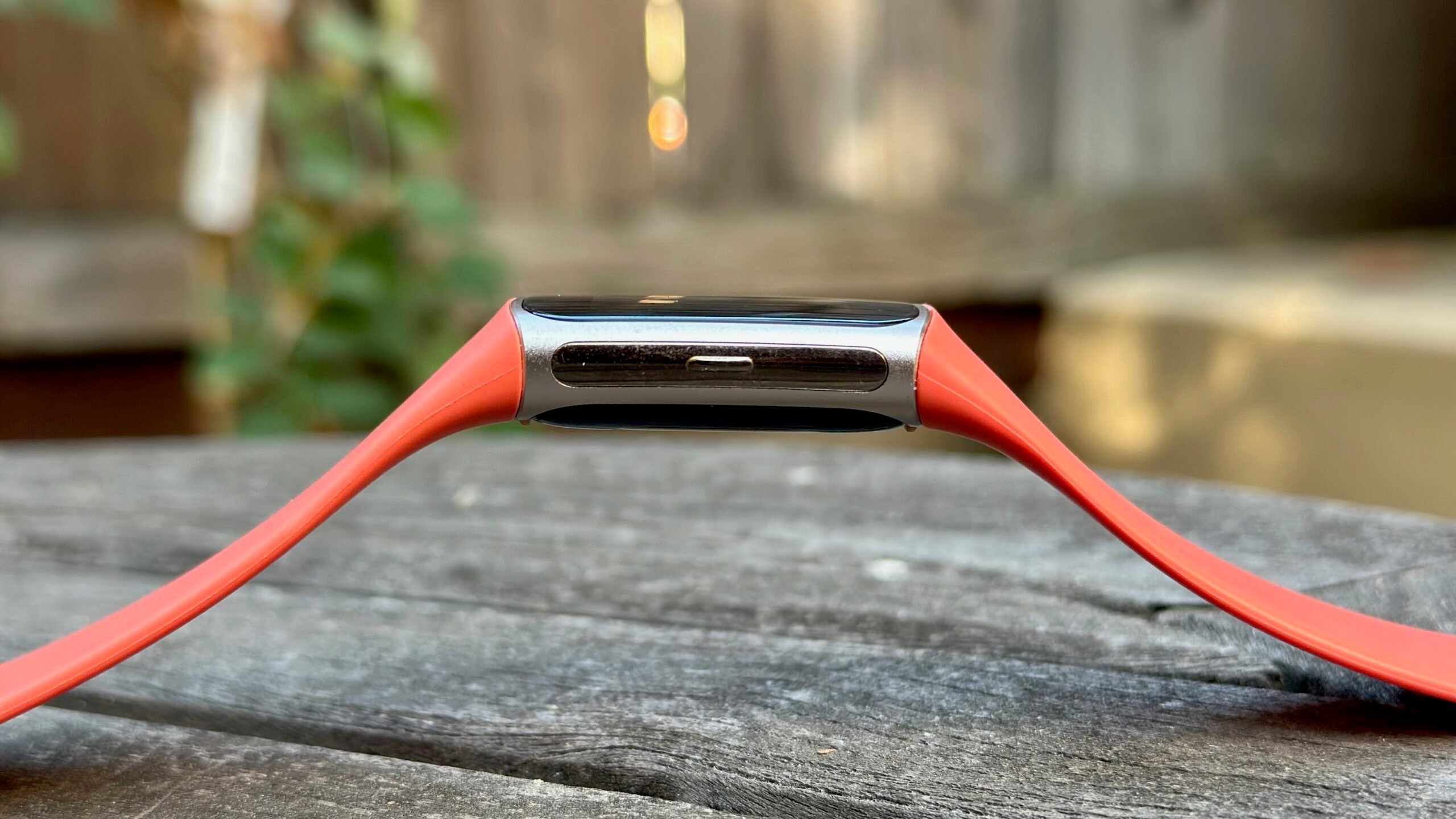
We mentioned “one exception” to the Fitbit Charge 6 and 5’s twin designs: a haptic button on the Charge 6’s left side that you squeeze to go back to the home page, trigger a shortcut, or switch between different views during an activity.
The Charge 5 is touch-only, and our reviewer called the experience “very hit or miss,” noting that you need to be “intentional” to trigger actions. By contrast, our Charge 6 reviewer praised the haptic button, saying it “works as it should, without being prone to accidental presses like a physical button.” It’s much more convenient than having to double-tap the display, too.
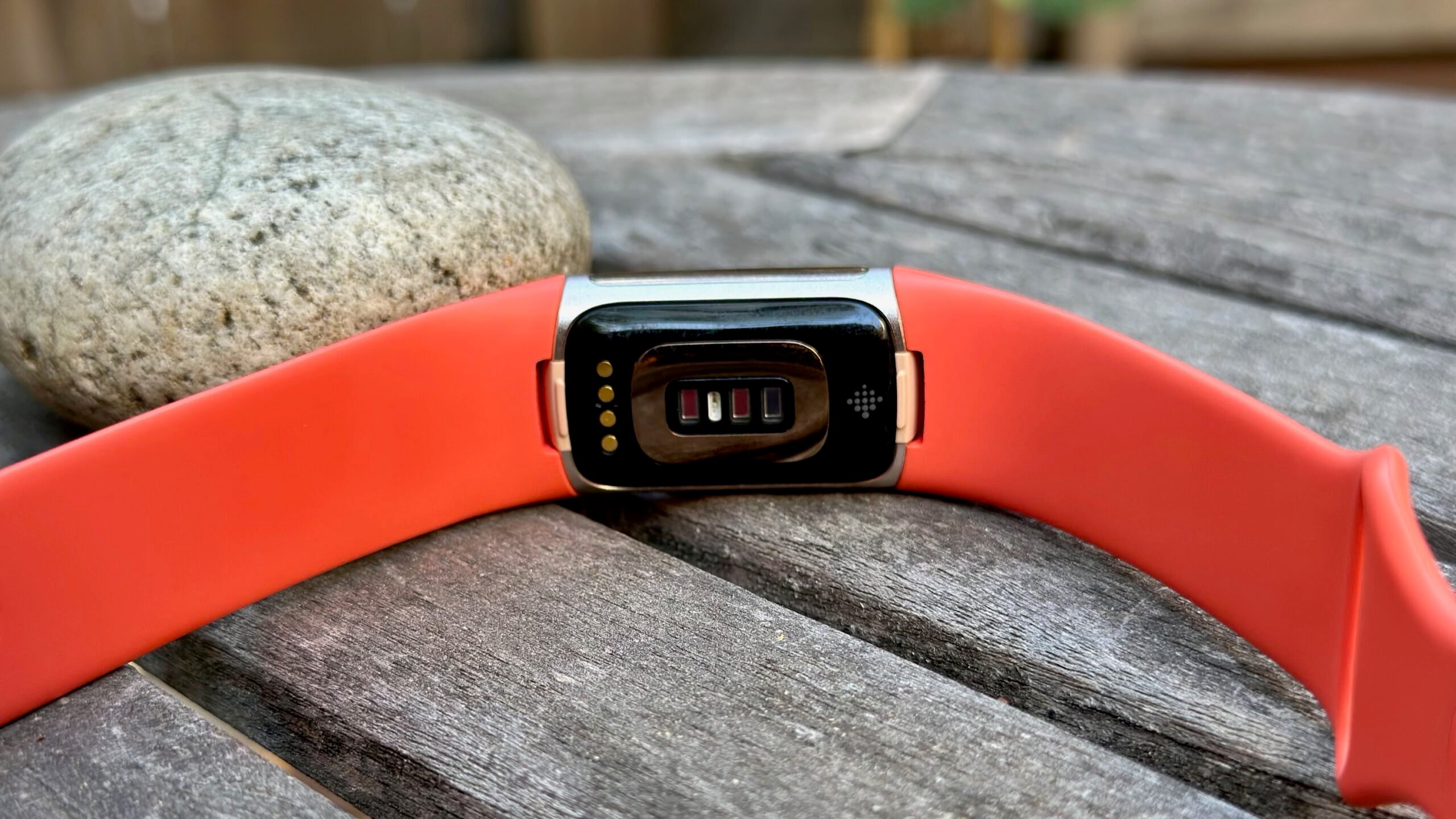
Beyond that one difference, every other Fitbit Charge 6 upgrade is found beneath the surface, possibly due to a new processor that can handle more Google smarts than the Charge 5.
First, Fitbit claims that the Charge 6 delivers “60% more accurate readings during vigorous activities like HIIT, spinning, and rowing” compared to the Charge 5. Essentially, if the Charge 6 isn’t resting properly on your wrist during arm-active sports, Fitbit uses “machine learning” algorithms lifted from the Google Pixel Watch to figure out your HR data with less information.
This Charge 6 algorithm apparently requires an “added compute load,” but Fitbit and Google ensured that this didn’t lessen the original one-week battery life estimate from the Charge 5.
The Charge 6’s extra smarts manifest in other small but vital ways. The Charge 5 could only keep six sports modes on it at once, out of 20 available; with the Charge 6, you get all 40 of Fitbit’s activities on-device at once, matching the Sense 2 and Versa 4.
One other cool upgrade for gym lovers or athletes with at-home equipment: the Charge 6 can connect via Bluetooth to gym equipment like Nordic, Peloton, Concept2, or Tonal to broadcast your heart rate. That’s not something the Charge 5 can do.
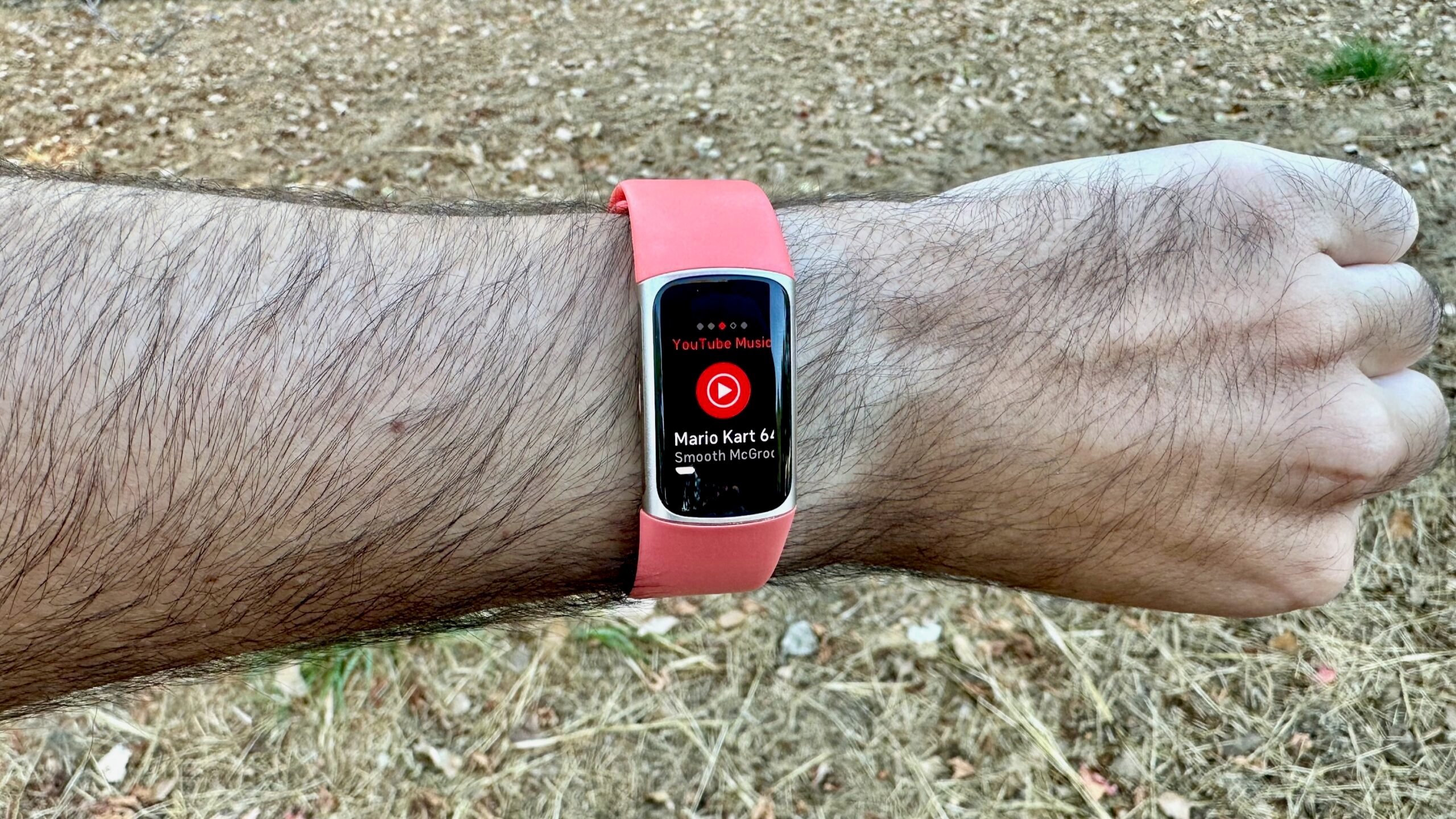
Fitbit Charge 6 owners also benefit from three new Google apps the Charge 5 lacks: Google Wallet, Google Maps, and YouTube Music.
Google Wallet doesn’t do anything that the Charge 5’s Fitbit Pay doesn’t; they’re both there for tap-to-pay transactions, and nothing else. The difference is that you’ll pull from your Google Pay cards instead of having to store and update your information in multiple apps. Plus, any transactions will appear in your Google payment history, which you may prefer.
The Fitbit Charge 5 doesn’t support Bluetooth playback controls, a basic feature found on almost every fitness tracker or watch. That’s also true on the Charge 6, with one Google-biased exception: YouTube Music subscribers get a Play/Pause button, Skip Forward/Back buttons, and Volume Up/Down buttons split across three screens. The Charge 6’s small display makes these controls somewhat inconvenient, but Google superusers will still appreciate them.
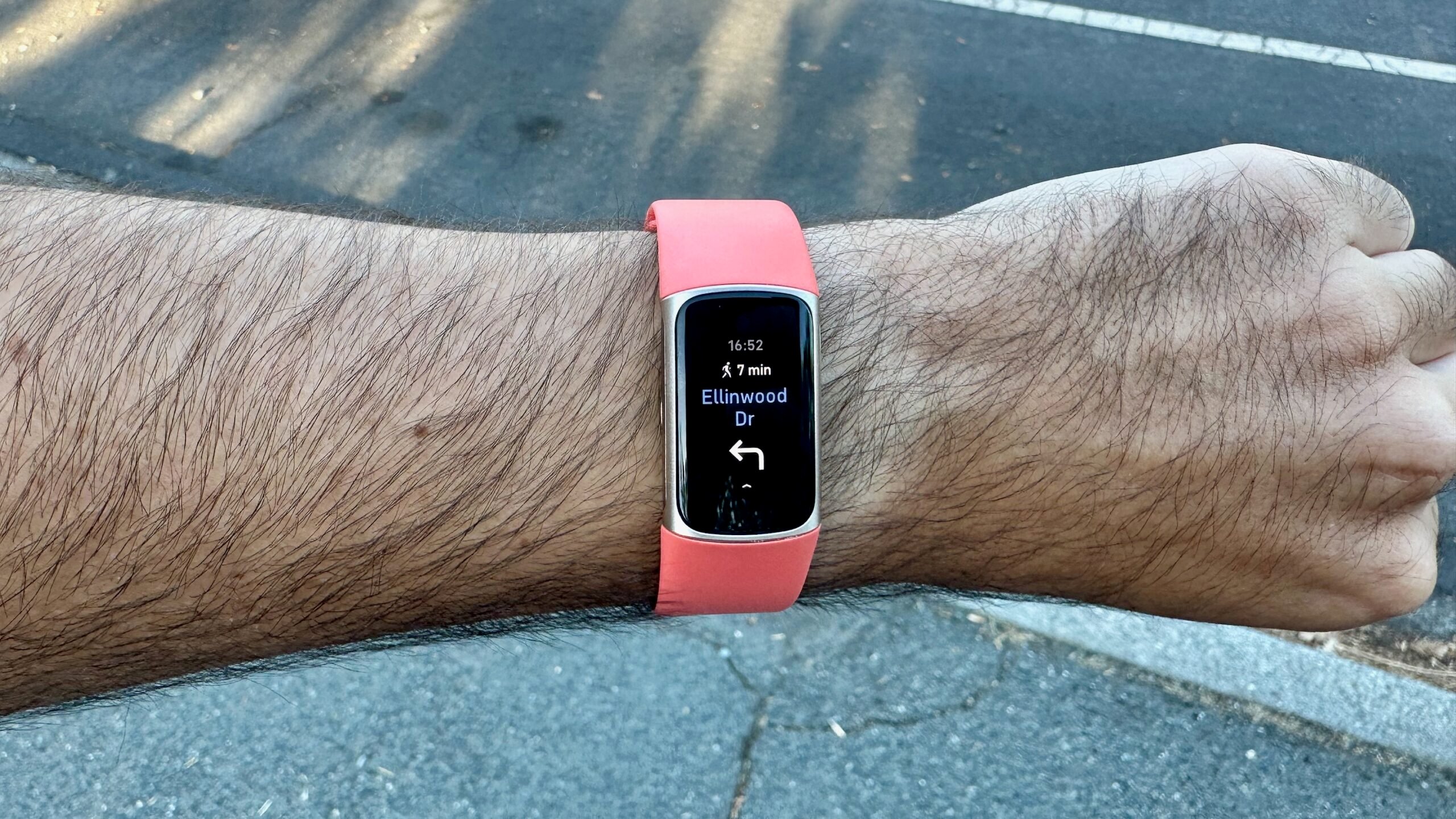
The one can’t-miss Charge 6 update, in our minds, is Google Maps turn-by-turn navigation. Enter a destination on your connected phone, and you’ll see a time to destination and an arrow on your wrist pointing you the right way, so you can keep your phone in your pocket. It’s convenient for day-to-day walks, or even for outdoor runs.
The downside to all of this Google goodness is that it gave Fitbit a pretense to transition everyone from Fitbit accounts to Google accounts. You have to create a Google account to use the Charge 6, while Charge 5 owners may have managed to avoid transitioning from their old Fitbit account. You can’t use any Fitbit without a Google account starting in 2025, but if that’s a deal-breaker for you, you should stick with your Charge 5 for now.
Fitbit Charge 6 vs. Charge 5: Should you upgrade?
It’s clear that the Fitbit Charge 6 is an iterative update, keeping the formula that made the Charge 5 our best fitness tracker pick for two years.
To summarize the key Charge 6 upgrades again, this is what you get:
- A haptic button
- More accurate HR data
- HR broadcast on gym equipment
- Google Maps, Google Wallet, and YouTube Music
- 40 on-device exercise modes instead of six
Of these, the haptic button, improved health data from workouts, exercise equipment connectivity, and Google Maps support are all very useful. We certainly wouldn’t recommend you buy the Charge 5 today, as the smarter 6 is more likely to get support and new software updates in the next couple of years.
Are these changes enough for you to spend another $160 on the Charge 6? That probably depends on whether or not you liked the Charge 5, and if you like changes implemented during Google’s Fitbit ownership like the Fitbit app redesign and Google account migration.
If not, there’s no point in buying in further, as Google’s Fitbit strategy is all about aligning the fitness brand with Google and Pixel hardware. Get used to the Google way of doing things, or look elsewhere!

Google apps and haptic button
Choose the Fitbit Charge 6 if you’re really excited for Google apps, you’re frustrated by the Charge 5’s all-touch controls, or if you’re upgrading from an older Fitbit like the Charge 4. Don’t upgrade to the Charge 6 if you don’t like the (very similar) Charge 5, or if you’re not a Google fan.

Last-gen classic
Don’t buy a new Fitbit Charge 5 unless you’re saving a ton of money on one compared to the Charge 6. But you can and should stick with the Charge 5 if the Charge 6 upgrades don’t sound like enough to tempt you.
